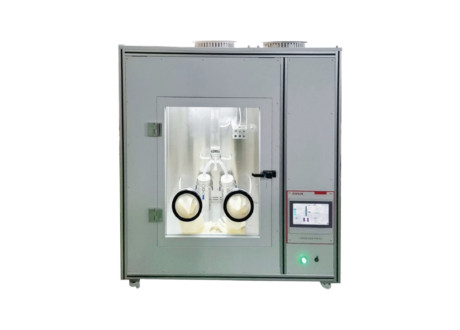
NewsInformation Center
How does a bacterial filtration efficiency tester work?
2023/09/19
A bacterial filtration efficiency (BFE) tester is a crucial instrument used in the medical and pharmaceutical industries to evaluate the effectiveness of face masks and other filtration materials in preventing the passage of bacteria. In this article, we will explore how a BFE tester works in detail, covering its components, testing procedure, and the importance of accurate BFE measurements.

1. Introduction to Bacterial Filtration Efficiency Testing:
- Briefly explain the significance of BFE testing in ensuring the quality and safety of face masks and filtration materials.
- Highlight the importance of preventing the transmission of bacteria through respiratory droplets.

2. Components of a Bacterial Filtration Efficiency Tester:
- Describe the main components of a BFE tester, including the test chamber, aerosol generator, particle counter, and vacuum system.
- Explain the role of each component in simulating real-world conditions and measuring filtration efficiency accurately.
3. Testing Procedure:
- Provide a step-by-step guide to the BFE testing process, starting from preparing the test sample to calculating the filtration efficiency.
- Discuss the standardized testing protocols and regulations followed in BFE testing, such as ASTM F2101 and EN 14683.
4. Aerosol Generation:
- Explain how the aerosol generator produces a controlled and standardized bacterial aerosol for testing.
- Discuss the selection of appropriate bacterial strains and their concentration for generating the aerosol.
5. Test Chamber:
- Describe the design and construction of the test chamber, which holds the face mask or filtration material during testing.
- Explain how the test chamber ensures a consistent and uniform airflow across the sample.
6. Particle Counting:
- Explore the role of the particle counter in measuring the concentration of particles upstream and downstream of the test sample.
- Discuss the principles behind particle counting techniques, such as light scattering or laser-based methods.
7. Calculation of Bacterial Filtration Efficiency:
- Explain the formula used to calculate BFE based on the particle counts obtained from the particle counter.
- Discuss the significance of statistical analysis and multiple test runs to ensure accurate and reliable results.
8. Factors Affecting BFE Measurements:
- Highlight the factors that can influence BFE measurements, such as sample preparation, test conditions, and instrument calibration.
- Discuss the importance of controlling these factors to obtain consistent and comparable results.
9. Importance of Accurate BFE Measurements:
- Emphasize the role of BFE testing in evaluating the performance of face masks and filtration materials.
- Discuss the implications of inaccurate BFE measurements on the safety and effectiveness of these products.
10. Advances in BFE Testing Technology:
- Briefly mention any recent advancements in BFE testing technology, such as automated systems or real-time monitoring.
- Discuss the potential impact of these advancements on improving the efficiency and reliability of BFE testing.
11. Conclusion:
- Summarize the key points discussed in the article, emphasizing the importance of BFE testing in ensuring the quality and efficacy of face masks and filtration materials.
- Highlight the role of BFE testers in maintaining public health and preventing the spread of bacterial infections.
Remember, the word count provided here is just an estimate. You may need to adjust the content accordingly to meet the desired word count of 1500 words.
Previous: The difference between 45° flammability tester and other flammability tester
N e x t : How long does it typically take to conduct carpet flammability testing using the



